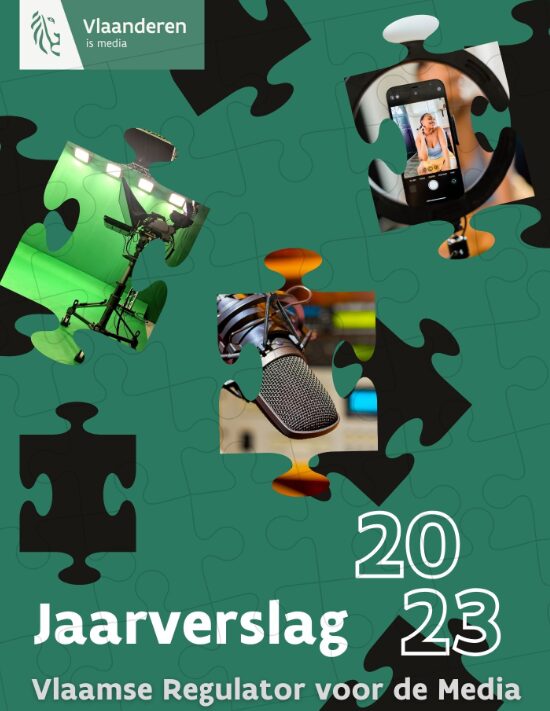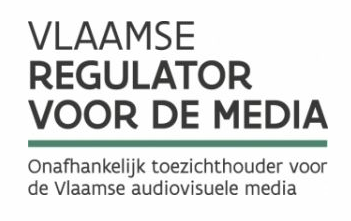There are few radio stations that you can listen to across the whole of Flanders. There is a high degree of concentration, caused by the dominant position of the radio stations of the public broadcaster. The transition to DAB+ may possibly change that situation, since this technology would create space for more radio stations. DAB+ is stimulated by the government, and radio broadcasters are obliged to invest in this new technology.
At local level there are many players, but since they each are active in small areas, we can often speak of a geographic monopoly. In addition, there is a tendency to group local radios. The radio stations that are part of a chain represent 71% of the total number of active local radios. In 2017, there will be a new round of frequency allocation and the Flemish Government wants to take that opportunity to avoid this chain formation among local radios in the future. At the same time, a new category of commercial radio broadcasters will be created: commercial network radios. These radios are due for 2018 and will have regional coverage (around several cities).
In 2015-2016 there were several changes in the Flemish television landscape. Medialaan changed its youth channel JIM to a kids’ channel named KADET, made for a specific audience of 8-12 year-old boys. It also changed the name of its channel 2BE to Q2. With the name Q2 they are making a link with the popular radio channel Qmusic. Medialaan also acquired the channel Acht by means of the acquisition of Bites Europe. It changed the name of Acht to CAZ and changed the programming to reach a male audience. SBS Belgium created a third channel, ZES, where the programming will consist of American series and movies. The (new) positioning of these channels can be understood in terms of advertisers’ needs.
Despite the popularity of new types of TV consumption (OTT e.g. Netflix), traditional Flemish television broadcasters stand firm. The degree of concentration increases as you progress through the value chain. At TV production level, there is low concentration. There are many independent production companies. A bigger concentration can be found at the level of the broadcasters. Although occasionally new players join the market, they rarely manage to conquer a large market share. Because of the acquisition of Bites Europe by Medialaan and the introduction of a new channel by broadcasting company SBS Belgium, it is likely that the concentration will increase. Finally the distribution market is dominated by few players. Cable distributor Telenet is the largest player in this field. The Belgian cable network owners (Telenet in Flanders) were obliged by the Conference of Regulators of the electronic communications sector to provide a wholesale offer for
analogue and digital TV, as well as broadband (but only in combination with digital TV). Following this regulatory decision, Orange started a digital TV distribution offer in Belgium in 2016, using the cable network.
An important evolution in television is the breakthrough of OTT (television distribution via the Internet). The Flemish television distributors have their own OTT players (Proximus TV Overal and Yelo Play (Telenet)). The TV broadcasters on their side also developed a joint OTT platform, STIEVIE, where TV programmes are available for 6 days. STIEVIE became eventually a subsidiary company of one broadcaster, Medialaan. Medialaan released in 2015 STIEVIE FREE, a similar but free OTT platform that only consists of the TV programmes of Medialaan (also available for 6 days). Next to OTT players, Flemish broadcasters are also more intensively using their website and app where they provide several TV programmes for free. The public broadcaster is planning a digital video player in January 2017.
As a result of new technologies, the revenue models for television are changing. This is causing tension over the distribution of income between players within different links in the value chain. Content producers, aggregators and distributors all want to claim the largest possible share of the revenue. Several players are trying to broaden their business. Telenet, the dominant player on the distribution market, holds 50% shares in De Vijver Media which is the parent company of SBS Belgium (television broadcaster with three television channels) and a successful production company. Telenet also produces TV series. On the other hand Medialaan (content producer and aggregator) has introduced an OTT player (STIEVIE) and has acquired a mobile operator.
Print media face difficulties due to declining sales and falling ad revenue. This is particularly the case for the magazines. The market of magazines is shrinking. In 2016 some titles changed owners and others ceased to exist. In contrast to magazines, newspapers are managing to (partially) compensate the decline in printed sales with the rise of digital sales. Especially the “quality” newspapers have high digital sales, and those sales have become an important share of the total sales. The so called “popular” newspapers have fewer digital sales but have very popular news sites and social media accounts.
The concentration at newspaper publishers level has dramatically increased through the creation of Mediahuis in 2013. Since then the 7 main Flemish newspapers are published by merely two publishers, De Persgroep and Mediahuis. The market for magazines is somewhat less concentrated.
On the distribution market, in 2016 the national postal service company bought the biggest press distributor, AMP, a parcel delivery network Kariboo! and four (press) shop brands (Press Shop, Relay, One Minute and Hubiz) from the French company Lagardère.
It is difficult to measure concentration levels of the Internet, as a surfer can easily visit a lot of websites, and many popular websites are controlled by foreign companies. Yet we notice, in reference to websites of Flemish media groups, a high concentration in terms of groups and a low concentration in terms of available websites.
Media companies extensively use the possibilities of the internet for their products. Websites, social media and apps have become firm extensions for a lot of media brands from radio, television and print media.
The relative popularity of radio, TV and print media brands in their own medium, is not always reflected on the internet equivalent. News media are very popular; their websites are the most visited ones. They perform well on social media as well, along with media brands that have a rather young image.
Convergence and cross-media trends have become a reality in the Flemish media landscape. Brands have moved to the forefront and are used in different types of media.
VRM has studied the accumulation of mandates in media companies. There is mainly a concentration of mandates in the field of local radios, as you can see in the next figure.



